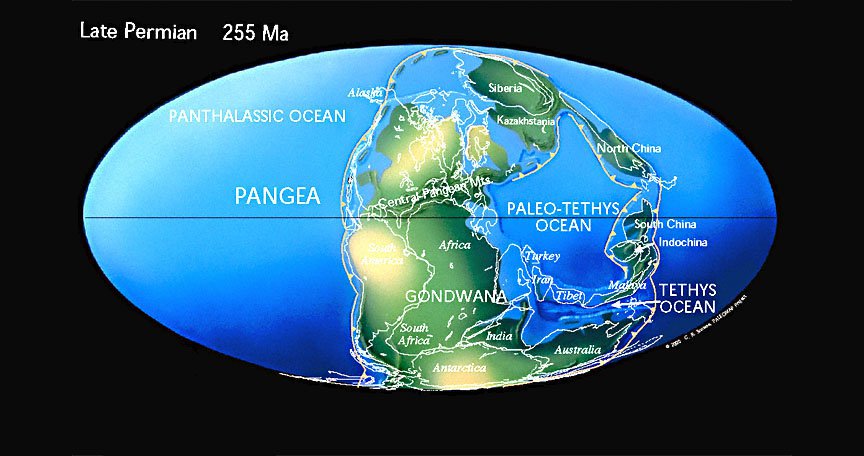
Sept. 27, 2018
Research Highlight
Global Warming at the Permian-Triassic Boundary
A new study on ancient climate changes in terrestrial sections

What the world looked like 250 million years ago.Image credit: Chris Scotese.
A recent study has examined climate change during the Permian-Triassic (P-Tr) boundary mass extinction using terrestrial sections. It is thought that global warming on Earth played a role in the ‘Great Dying’ that occurred about 252 million years (Ma) ago. Evidence of this temperature rise has been documented for tropical sea-surface temperatures, however fewer studies have been performed on terrestrial sections. Recently, a team of scientists reported results from such samples gathered in North China that correspond to warming climate conditions. The study was based on chemical weathering indices, and demonstrates the applicability of these methods in examining major bioevents in Earth’s history.
The study, “Intensified chemical weathering during the Permian-Triassic transition recorded in terrestrial and marine successions,” was published in the journal Palaeogeography, Palaeoclimatology, Palaeoecology. The work was supported by NASA Astrobiology through the Exobiology Program.